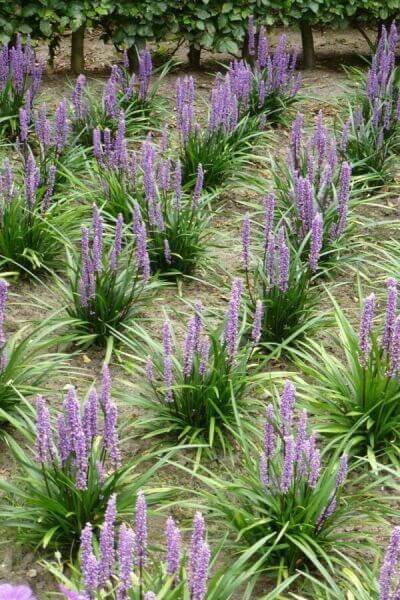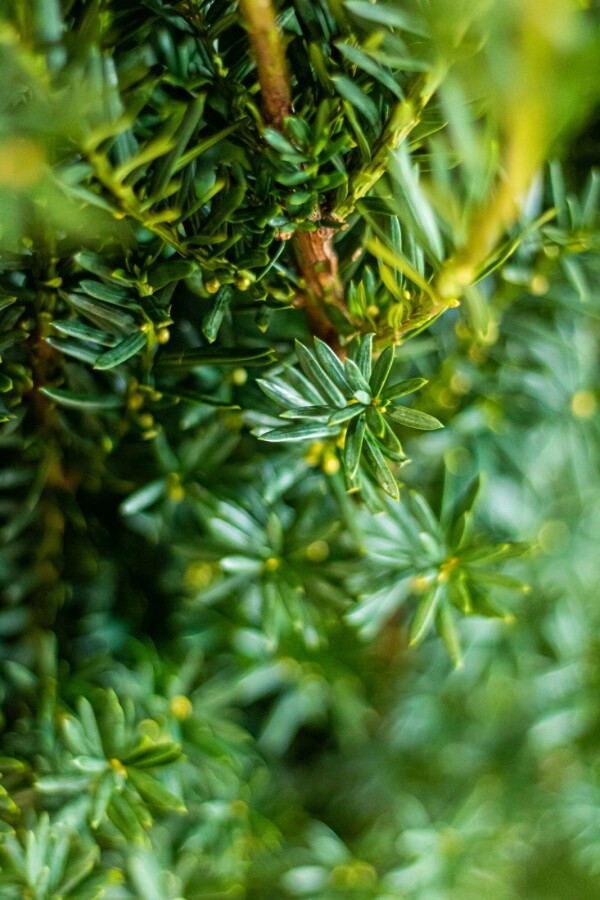Best Hedging Plants For Raised Beds
Hedging Plants For Formal Hedges
Improve your garden's appeal with lush hedge varieties such as Yew (Taxus), Thuja, Laurel, Photinia, and Bamboo, celebrated for their structural integrity and ecological advantages.
Yew and Thuja provide evergreen protection and winter season durability, while Laurel offers quick growth and broad, fragrant leaves.
Photinia includes seasonal charm with its dynamic red foliage, and Bamboo provides a low-maintenance, serene ambiance.
These hedges enhance air quality, reduce noise, and create tranquil, private areas.
Correct planting, spacing, and maintenance guarantee energetic growth and environmental consistency.
Check out how these lush varieties can elevate your garden's charm and wellness.
Secret Takeaways
Transform Your Garden With Lush Hedge Varieties
- Select Yew for its dense, evergreen development and unparalleled durability.
- Choose Laurel for its fast growth and broad leaves, making sure quick privacy.
- Select Photinia for its dynamic seasonal foliage, which turns a striking dark red.
- Use Bamboo for a low-maintenance, winter-hardy hedge with visual appeal.
- Area plants 2-3 per meter and prune frequently for optimal growth and health.
Popular Hedge Plants
When changing a garden with lavish hedge ranges, it's necessary to consider popular hedge plants such as Yew, Thuja, Laurel, and Photinia due to their distinct qualities and advantages.
Yew (Taxus) is highly esteemed for its longevity and dense, green growth, making it a prime choice for enduring landscapes.
Thuja is noted for its evergreen foliage and robust winter strength.
Photinia includes seasonal vibrancy with red leaves that darken with time, developing vibrant visual appeal.
Laurel uses fast growth and fragrant, broad leaves, ideal for fast personal privacy.
Furthermore, Bamboo is an outstanding choice for ambiance, offering a low-maintenance, winter-hardy alternative that improves the garden's aesthetic with its stylish, swaying canes.
These choices accommodate a variety of horticultural needs and choices.
Benefits of Garden Hedges
Garden hedges offer a wide range of benefits, making them an important addition to any landscape. These natural barriers are affordable to implement and provide considerable wind security, enhancing air blood circulation and contributing to noise decrease. The dense foliage of hedges like Thuja and Beech makes sure privacy by blocking exposure, creating a tranquil and secluded environment.
Hedges likewise play an important role in microclimate guideline, providing a steady environment that fosters plant development and reduces temperature level fluctuations. Their detailed leaf structures filter contaminants, improving air quality and adding to a much healthier garden ecosystem.
Furthermore, hedges excel in sound reduction, soaking up and deflecting sound waves to lower ambient sound levels. This double functionality of supplying both visual and acoustic privacy improves the total serenity and visual appeal of any garden.
Planting and Maintenance Tips
For an effective hedge, precise preparation of the planting location is essential. Guarantee the soil has correct pH and drainage to support strong root development.
Space the plants properly for the chosen species. Water the hedge often throughout its preliminary development stage, adjusting as needed with seasonal modifications.
Carry out a systematic pest control and disease avoidance method, using chemical or organic treatments when needed. Regularly inspect for aphids, mites, and fungal infections.
Apply mulch to keep wetness and reduce weeds. Seasonal pruning promotes thick development and air blood circulation, essential for plant health.
Following these guidelines will assist you cultivate a dynamic, properly maintained hedge that boosts the beauty of your garden.
Spacing and Trimming Guidelines
Spacing and Trimming Guidelines
Appropriate spacing and trimming are important for cultivating healthy, aesthetically appealing hedges. Appropriate spacing makes sure each plant gets enough nutrients, light, and air flow.
Follow these standards for ideal hedge upkeep:
- Spacing: Position hedge plants 2-3 plants per meter to encourage robust growth.
- Pruning Techniques: Regular pruning is essential for maintaining desired hedge height and shape. Trim brand-new development in summer season and cut down older wood throughout winter.
- Seasonal Care: Adjust trimming approaches and schedules according to seasonal requirements to make sure plant health.
- Hedge Height: Frequently display and cut to preserve the desired hedge height and achieve consistent looks.
Adhering to these actions will guarantee your hedge flourishes, enhancing both the appeal and functionality of your garden.
Picking the Right Hedge
Selecting the Right Hedge
Selecting the proper hedge includes evaluating aspects such as fully grown height, foliage density, and environmental strength. Effective hedge plant selection needs understanding each types' development characteristics and site-specific flexibility.
For example, Yew (Taxus) uses outstanding longevity and thick growth, while Thuja is significant for its winter strength. Furthermore, thinking about maintenance requirements is crucial; fast-growing types like Laurel or Privet need regular cutting, whereas low-maintenance choices like Bamboo or Ivy might be more suitable for those seeking very little maintenance.
Environmental aspects such as soil type, light availability, and wetness conditions ought to likewise guide the choice process. This cautious technique guarantees the picked hedges will thrive, offering both visual and functional benefits to the garden landscape.
Delivery and Planting Advice
To ensure your hedge plants prosper, they should be delivered by specialized carriers and planted without delay upon arrival.
Follow these important actions for effective planting:
- Soil Preparation: Improve the soil with raw material to improve drainage and nutrient material.
- Planting Depth: Create a trench twice the width and equal to the depth of the root ball.
- Watering Strategies: Water completely after planting, keeping the soil consistently moist but not saturated.
- Mulching: Apply a layer of mulch to keep wetness and reduce weeds.
Consumer Support and Service
Given the essential role of timely support in horticultural pursuits, our client assistance group is available six days a week through telephone, email, and social networks to use skilled guidance and swiftly deal with any concerns. Their dedication to quick response times ensures customer complete satisfaction by fixing questions associated with plant health, ideal planting methods, and maintenance schedules.

Social network
This extensive assistance system, enhanced by an excellent 9.3/ 10 consumer rating, highlights our commitment to enhancing the gardening experience for each client.
Often Asked Concerns
For How Long Does It Consider Hedge Plants to Develop?
Hedge plants normally need one to 3 years to end up being fully established, with the precise period differing by species and growing conditions.
Efficient care throughout this important duration is essential for robust growth. Consistent watering, vigilant weed control, and suitable fertilizer application are critical in promoting strong root advancement.
For instance, fast-growing types like Laurel may develop more quickly, while slower-growing varieties such as Yew might take longer. Persistent maintenance accelerates the establishment process, resulting in thick and healthy hedges.
What Are the very best Hedge Plants for Personal Privacy?
The concern of the very best hedge plants for personal privacy includes assessing evergreen and deciduous choices.
Evergreen hedges like Thuja, Laurel, and Cypress provide year-round protection, guaranteeing constant privacy.
In contrast, deciduous hedges such as Beech use seasonal personal privacy, shedding leaves in colder months.
Secret upkeep suggestions for personal privacy hedges consist of regular cutting, fertilizing in spring, and appropriate spacing-- generally 2 to 3 plants per meter.
In addition, consistent watering and diligent weed elimination are essential for promoting healthy, thick development.
Can Hedge Plants Bring In Wildlife to My Garden?
Yes, hedge plants can draw in wildlife to your garden by providing necessary advantages like shelter, food, and nesting sites, thereby improving local biodiversity. Yew, holly, and laurel are exceptional for drawing in birds, while ivy supports a range of insects.
Nevertheless, it is very important to keep in mind that there are some drawbacks, such as increased upkeep to handle insects and routine upkeep. Carefully picking and maintaining hedge ranges can help balance these advantages and drawbacks, ultimately promoting a vibrant and sustainable environment in your garden.
Are There Any Flowering Hedge Plants Available?
Yes, there are flowering hedge plants readily available that can boost the appeal of your garden.
For example, Elaeagnus, also called Olive Willow, produces fragrant white flowers in the fall, adding a touch of sophistication.
Photinia, another popular option, showcases vibrant red leaves that develop into an abundant green, developing a dynamic visual impact throughout the seasons.
To make sure these plants grow, it's vital to practice appropriate pruning strategies and seasonal upkeep, such as trimming new development in the summer and cutting down in the winter season.
These procedures will help maintain the health and aesthetic appeal of your flowering hedges.
How Do I Prevent Insects in My Hedge Plants?
To avoid insects in hedge plants, utilize natural bug control approaches and keep correct hedge care. Present beneficial insects like ladybugs, which prey on harmful pests, to create a balanced ecosystem.
Regularly check your hedges for indications of problem and promptly remove any affected parts to avoid the spread. Make sure the health of your hedges by using well balanced fertilizers and offering sufficient water.
Utilize mulching to retain soil wetness and correct spacing to minimize plant stress and promote robust growth. These practices collectively assist in decreasing insect problems and maintaining a healthy hedge.
Conclusion
In essence, picking the ideal hedge varieties such as Yew, Thuja, and Laurel can transform any garden into a tranquil sanctuary. These plants offer year-round greenery, boost aesthetic appeal, and deal useful benefits like noise decrease and wind security.
Proper planting strategies, accurate spacing, consistent watering, and seasonal cutting are important for optimal growth.
Reliable shipment services and professional customer assistance guarantee a seamless experience from purchase to planting, making it easier than ever to elevate your outside space.
Garden hedges use a wide variety of benefits, making them a valuable addition to any landscape. These natural barriers are cost-effective to carry out and Additional resources provide substantial wind protection, boosting air flow and contributing to sound reduction. The thick foliage of hedges like Thuja and Beech ensures personal privacy by blocking exposure, developing a remote and peaceful environment.

Pruning Strategies: Routine pruning is essential for maintaining wanted hedge height and shape. Cut new growth in summer and cut back older wood throughout winter.